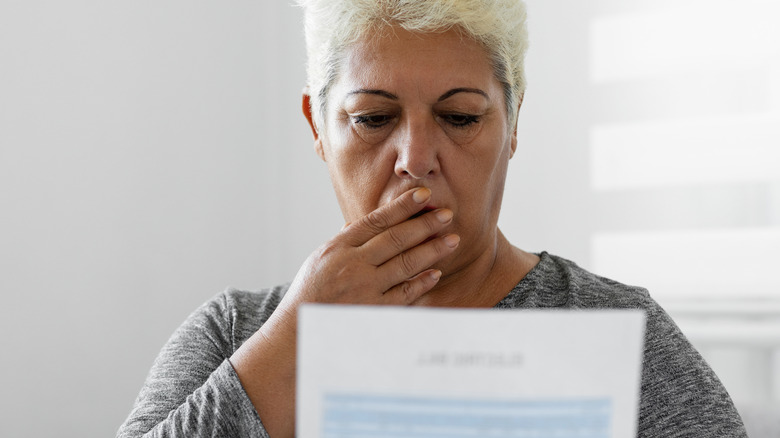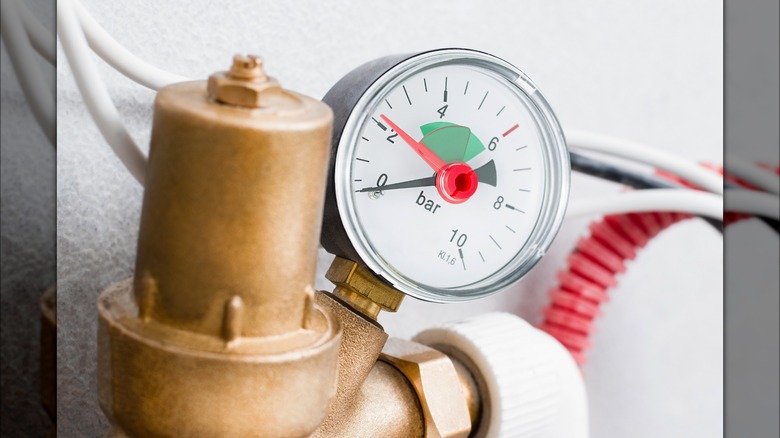Can Installing A Pressure Reducing Valve Reduce Your Water Bill? Here's What We Know
Water bills may initially look like a trickle, nothing to make your eyes pop out. Although the average American pays about $157 in monthly utility bills, the water component comes down to just $45 (per Bankrate). But wait till you discover that every year, the most important liquid on earth digs a sizable financial hole of approximately $540, about a month's worth of grocery shopping. To save on your water bill, you can start taking military-style showers or turn the water on and off between hair and body scrubbing. However, other sleek suggestions exist, including installing a pressure-reducing valve. Before you dismiss them as just another fancy fad, here's what to know about pressure-reducing valves, including how they can help you save some cash at the end of the year; cash you can save — or use to upgrade other parts of your home to cut costs on utilities.
Pressure-reducing valves lower water and air pressure, specifically between the inlet and outlet sides. Some also have gauges that show real-time pressure levels, making it easy for users to track and monitor. Pressure-reducing valves can easily be confused with pressure-relief valves, especially because both are sometimes called PRVs. To distinguish between the two, think of a pressure-relief valve as a safety device that — when the pressure starts to build — opens and allows the water to escape through a designated outside channel. Pressure-reducing valves, also called pressure regulators, on the other hand, seek to maintain steady pressure.
How a pressure-reducing valve can help reduce your water bill
High water pressure has its place. It can come in handy, for example, in firefighting. But in the home, high pressure can lead to spillovers and wastage. You may notice leaking water heaters, dripping faucets, seeping pipes, and some fizzy noise. While these wastages may look like nothing to worry about, they can quickly mount up to something eye-popping. Just so you have an idea, cutting pressure by half — like from 100 pounds per square inch (psi) — to 50 psi — can see you use 33% less water, according to Watts Australia. That's a lot, yet just a fraction of the benefit.
The main thing to consider is that the more water you use, the more that needs to be pumped. Unfortunately, the energy to pump water is not given as a gift by the federal government. And, of course, it is clear that the amount of water you use affects your other utility bills, particularly your gas and electricity bills. Households should target pressure ranges of between 45 and 60 psi. It is not uncommon, however, to find main lines hitting 100 pounds per square inch — even more. So, is installing a pressure-reducing valve a good way to save on your water bill? The answer is "Yes:" Directly by reducing wastage and the amount of water you use, and indirectly because you'll be paying less cash out as energy bills.

